On their honeymoon, Rob and Eric Thomas-Suwall, a surgeon and a political theorist respectively, discovered their shared passion for art. With pun-intended Instagram account name, TheIcyGays, they have been committed to transparency by sharing their collected artworks online. Focused on emerging women and queer artists, their growing collection has prompted them to create a gallery area in their home for more new artworks.
LARRY’S LIST had an inspiring conversation with the couple who discussed why Instagram is an indispensable tool in the art world; how their most treasure artwork by Salman Toor is related to growing up queer in less accepting cultures; how to collect art as a couple with one veto-free purchase per year; their advice to other collectors regarding women or queer artists; and whether art has the power to bring social change.
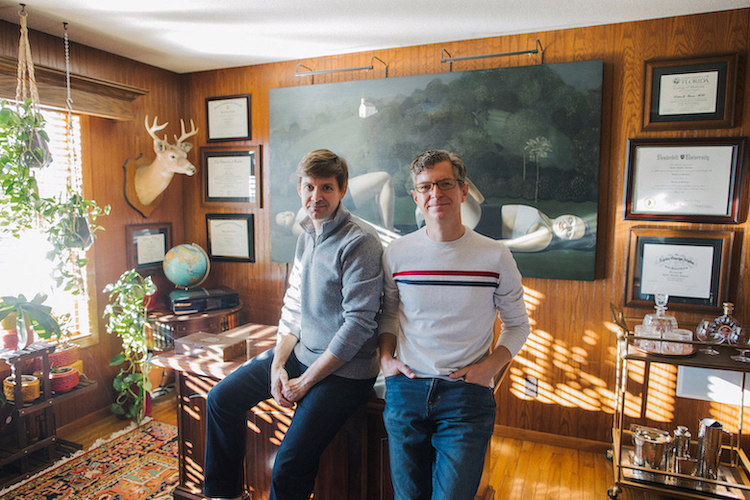
Collecting
What made you want to start collecting art? What is the main motivation behind your collecting?
We independently had the collecting bug from a very early age. However, it was not until we visited a David Hockney retrospective on our honeymoon that we discovered a mutual passion for art. Though we had seen a lot of art in the past, it never felt so relevant and contemporary. We considered buying a Hockney print but elected instead to use the money for an original painting by an emerging artist, and quickly discovered that there were many contemporary artists creating colorful, queer, figurative works that personally resonated with us. Ultimately, our motivation for collecting has become to support these artists and the galleries that represent them.
Why are you more interested in emerging than established artists?
Both of us have always been intrigued by the latest advancements, be it in technology and science, music and film, or social and political change. While established artists are surely wonderful, they don’t necessarily reflect these unique cultural shifts and evolving paradigms. One of the things we find so exciting about emerging art is the way it engages with the zeitgeist and crystalizes individual perspectives. In addition, by collecting emerging artists, we are often able to meet the person behind the works and discuss how events are informing his/her practice. Such interactions aren’t always feasible with established artists.

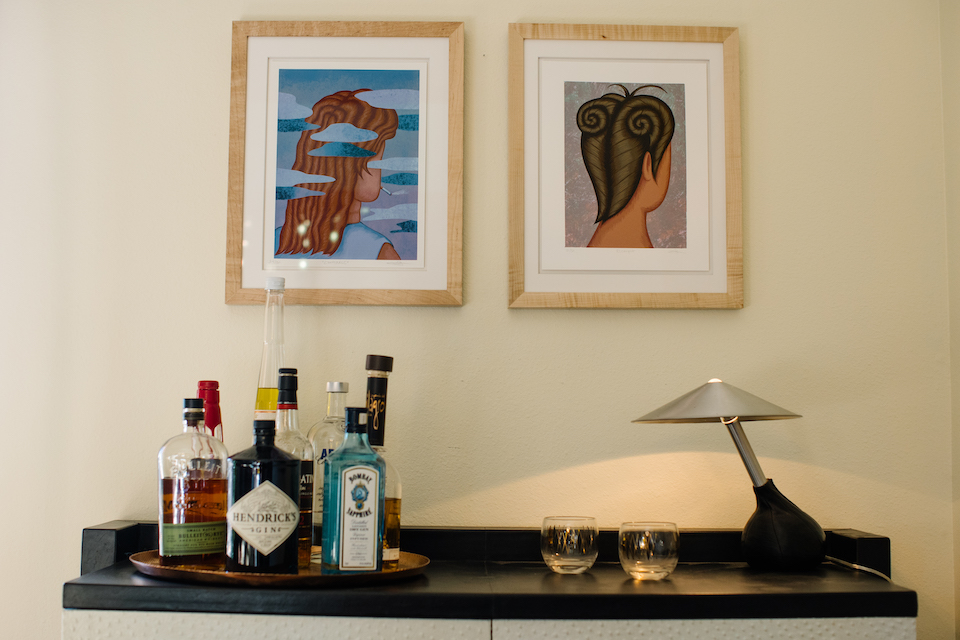
Why did you decide to focus your collection on women and queer artists? Is there any particular type of art that has consistently attracted you?
When we purchased our first painting in 2016, we did not specifically start with a focus. In fact, if you had asked either of us five years ago about our favourite artistic style, it would have likely been modernism or abstract expressionism. However, as we began to collect as a couple, we realized we were frequently responding to works by female and queer artists.Indeed, we find that work by these artists often articulate contradictions within a patriarchal, heteronormative society; and by supporting these artists we hope to encourage or even amplify art as a form of social critique. Once our collection started to expand, more specific themes of humor, intimacy, and surrealism emerged. By allowing the collection to grow organically, we are constantly surprised by the dialogue that has developed between the works.
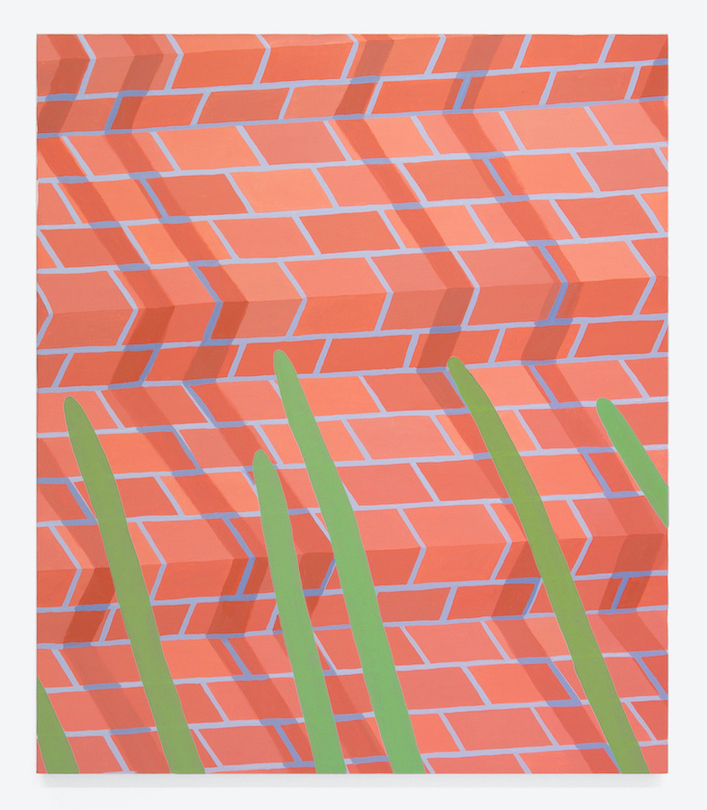
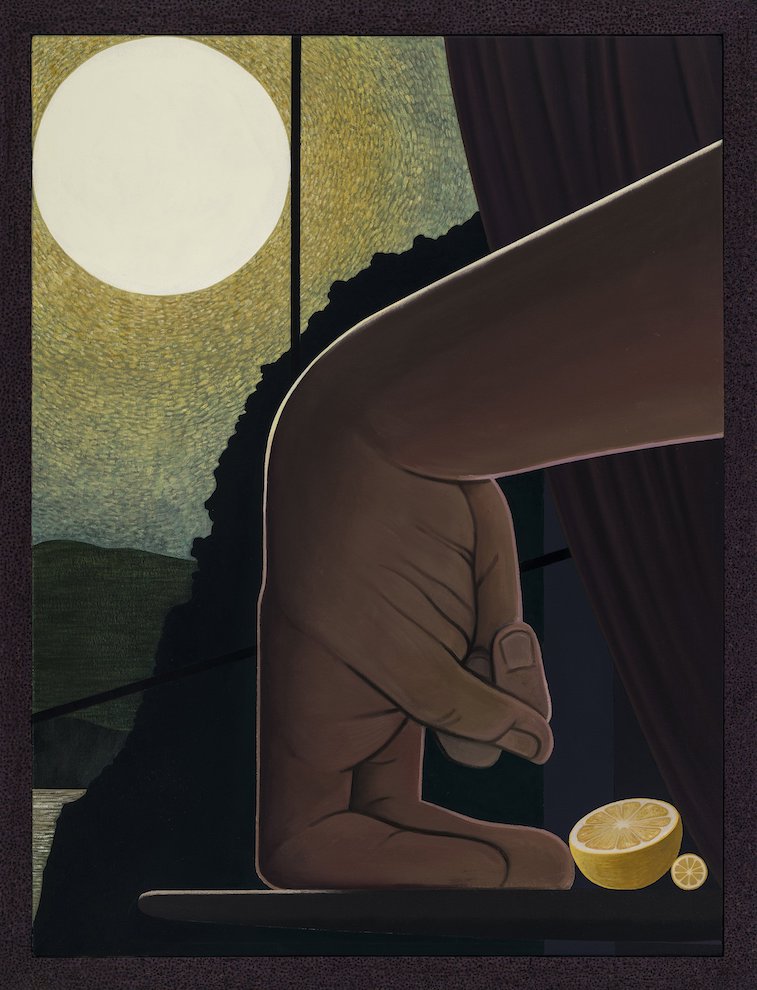
What were the first and the latest artworks you purchased?
The first artwork we purchased was “Stairs #3” by Corydon Cowansage from her solo show “Dwell” at 17 Essex. Our latest acquisition was “Submission” by Michael Stamm from his solo show “so super sorry sir!” at Shulamit Nazarian.
How many artworks do you own? Where do you display your collection?
Our collection has about 75 pieces, all of which are on display in our home. We are currently in the process of creating a gallery area on our lower floor to make room for new works.
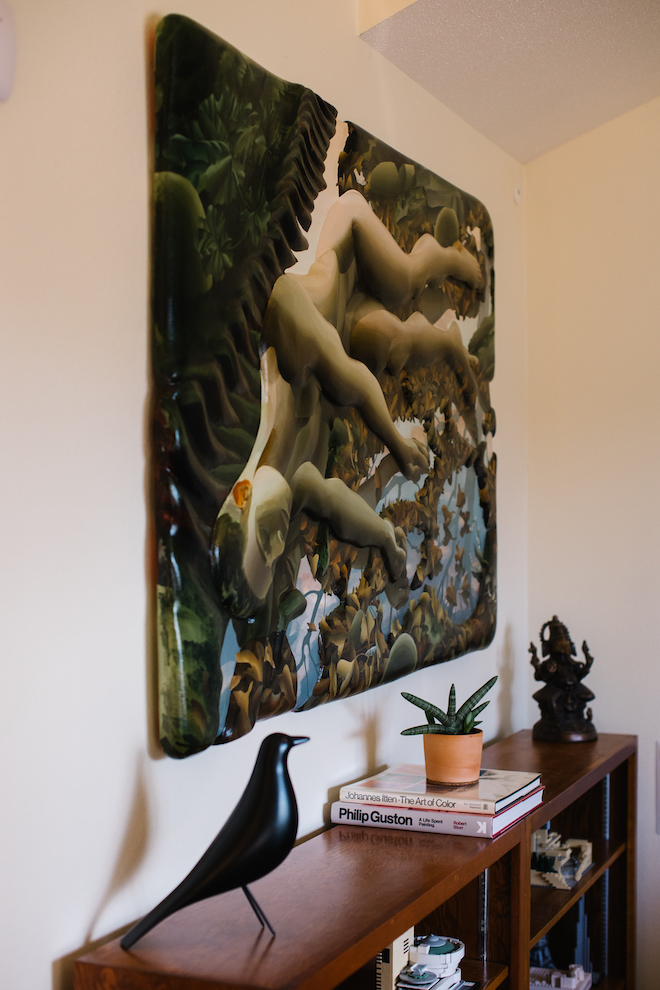
Have you ever presented your art collection publicly?
We have yet to physically exhibit our collection. However, we have used our Instagram account @TheIcyGays to share works publicly and have the majority of the pieces posted at the digital museum Collecteurs.com. We committed early on to transparency and have found that sharing online has created lasting connections with other like-minded artists, gallerists, curators, and collectors.
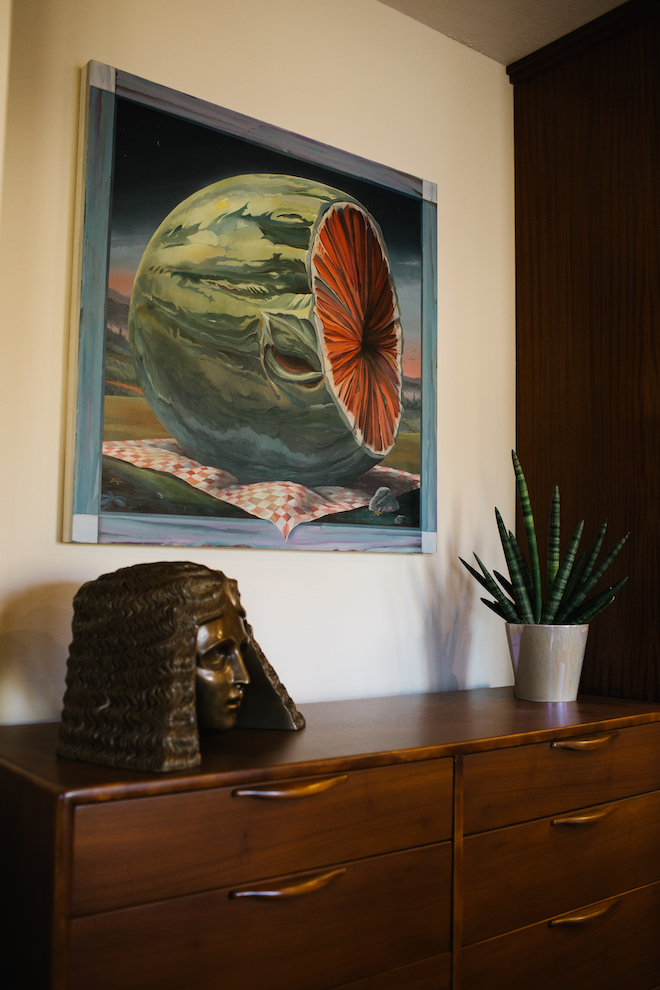
What considerations guide you to make a purchase?
We usually find that we have a visceral reaction to works we end up buying. We are intrigued by pieces that are stylistically unique and offer a perspective we haven’t encountered before. Most of the time we share in this reaction, and when the feeling is mutual, we immediately reach out to the artist or gallery.
How is it collecting as a couple? What will happen when you do not agree on certain artworks?
Whether traveling to fairs, having conversations about possible acquisitions, debating the merits of certain works, or just enjoying our collection at home, we find that our mutual passion for art constantly enriches our relationship. With regards to selecting pieces, we are almost always in sync, but there are rare disagreements. We joke that we each get one veto-free purchase per year, but even when this happens, we both ultimately end up loving the work.
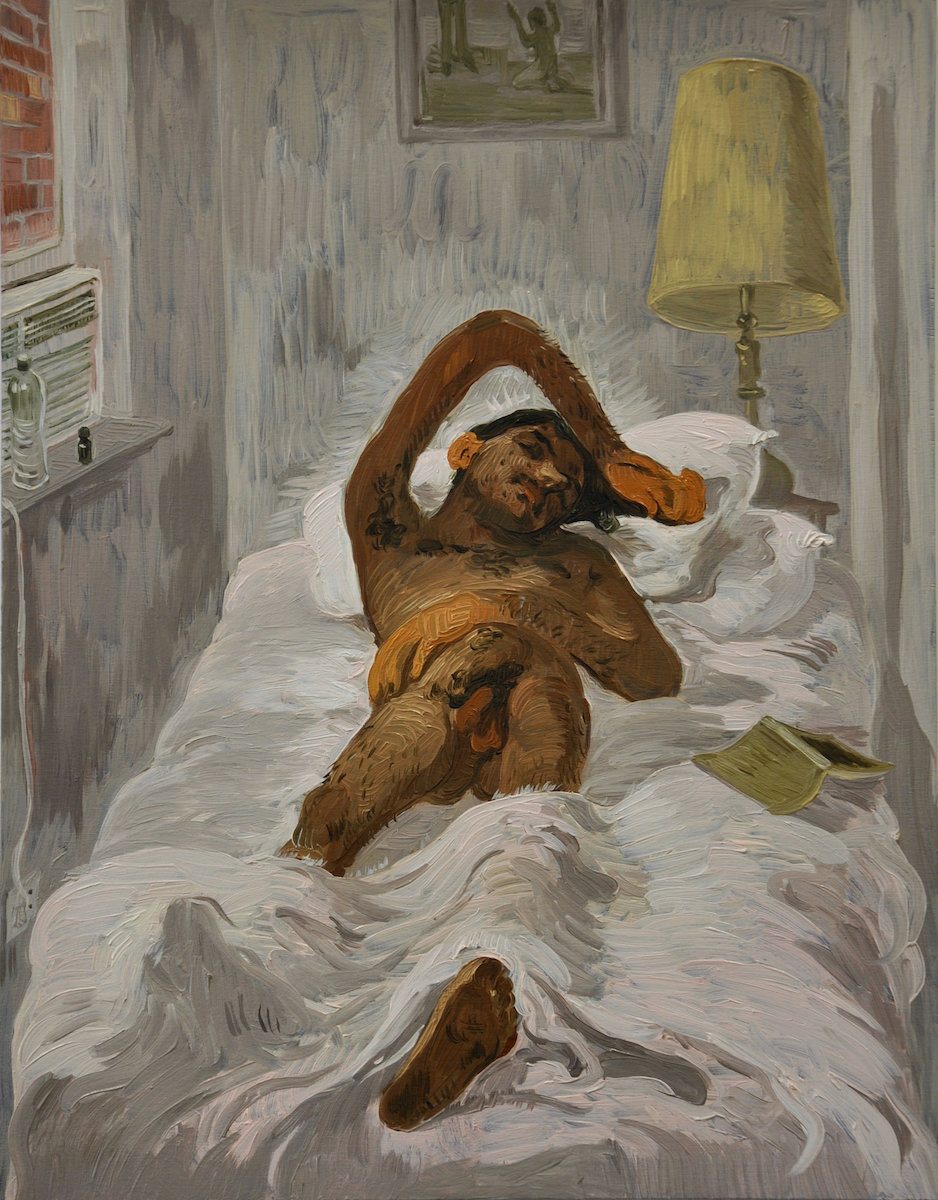
What is your most treasured artwork?
Our most treasured piece would have to be “Lavender Boy” by Salman Toor. We did a studio visit with Salman in 2019 and had a wonderful conversation about growing up queer in less accepting cultures (Salman in Pakistan and us in the Deep South). We immediately fell in love with the way Salman imagines scenes of modern queer life and recreates them using classical methods. We ultimately acquired this piece from Salman’s recent solo show “I Know a Place” at Nature Morte gallery in New Delhi, India. There is such a palpable sense of serenity in the work that is so well communicated through both the imagery and technique. We love living with this painting.
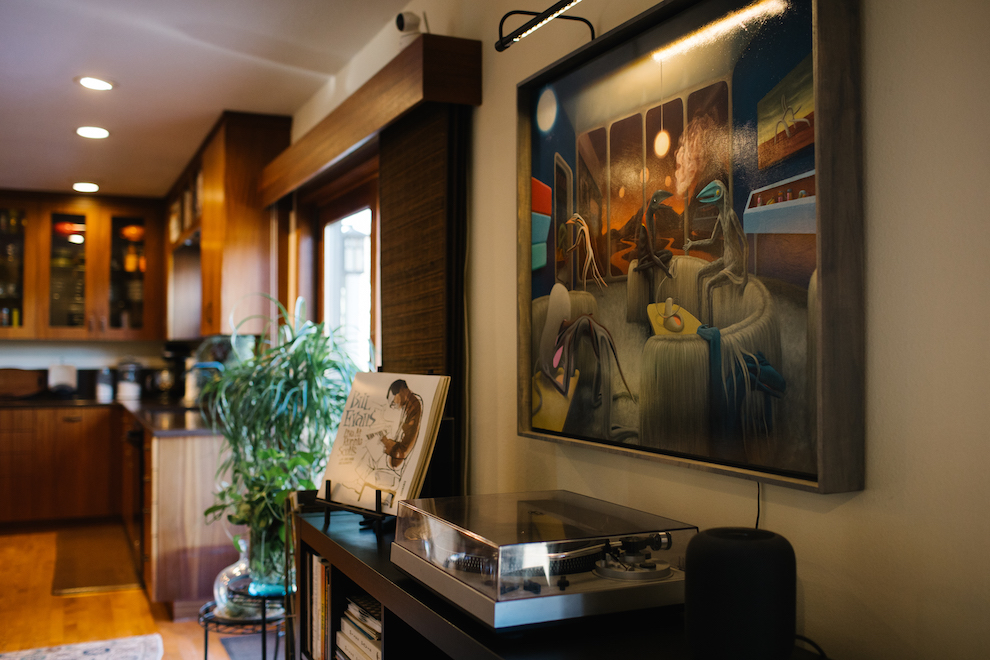
How important is it for you to meet the artists who created the artwork?
Our remote location limits our ability to casually meet artists in person, but during our trips to major cities we schedule as many studio and social visits as possible. While studio visits are always informative, it’s also nice to have more casual get-togethers where we can just interact as people without the weird pressure that can accompany a more formal collector-artist meeting. Certainly, we like to hear about an artist’s practice, but it’s also great to get the backstory: what life events were transformational, what informs their work beyond artistic influences, even what they find funny or moving.
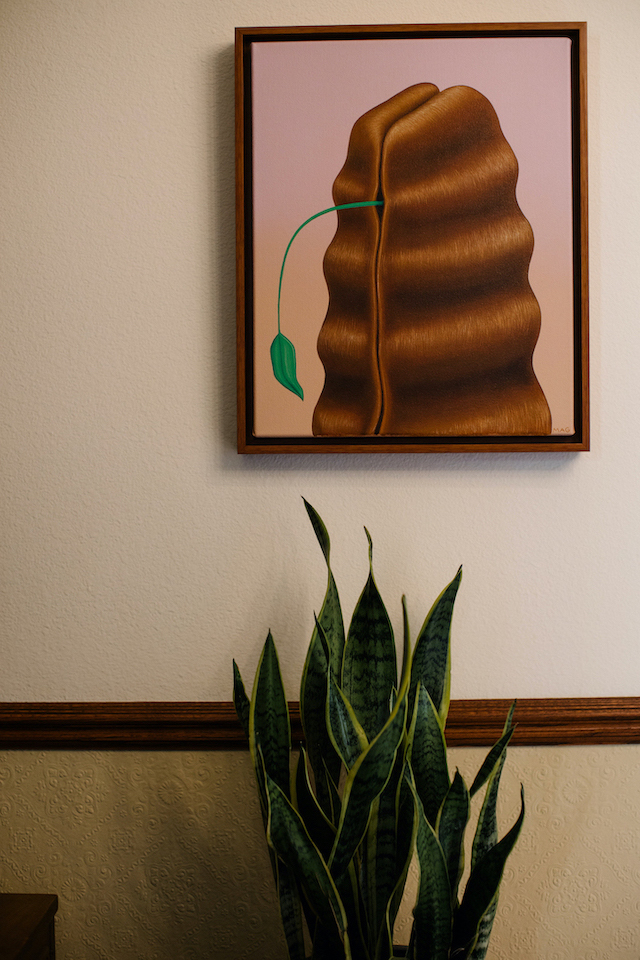
Your art-filled Instagram profile and your humorous account name are just fascinating. How are you using Instagram to discover artists and artworks? How much time do you spend on Instagram each day? How often do you acquire artworks via Instagram?
Thanks for the compliment! TheIcyGays certainly made for a great pun, and it’s been a nice icebreaker when meeting new people. We’ve found Instagram to be an indispensable tool in the art world because traditionally seeing new works has been mediated by gallery and museum presence. With IG, we are often exposed to work that other artists and curators appreciate but may not have gotten the brick-and-mortar exposure that would previously have been necessary for collectors to take notice. As for time on IG: we have disabled our screen time report so that we don’t have to admit how much we’re on the app.
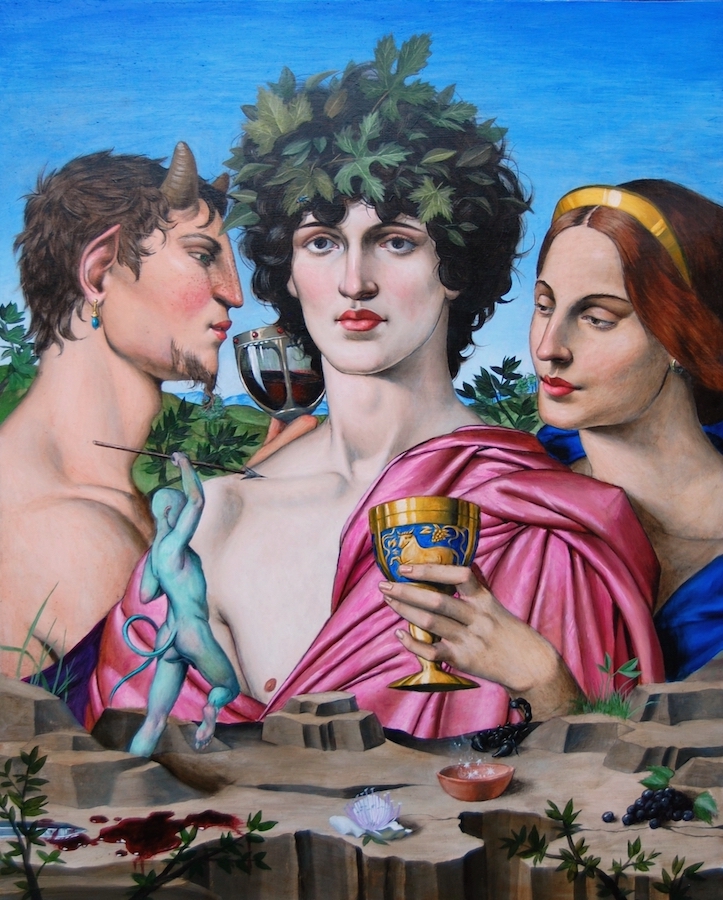
Women and queer artists
What is your advice to collectors who would like to explore more or better understand women or queer artists?
We would say that art gives you a window into another person’s reality, and for women and queer artists, this is often a window into a world that is distinctly different from the one others are used to peering through. Surely there is a difference here between women artists and queer artists; but while half the world is female, women’s voices in art have, historically, been minimized. Queer voices even more so. We would encourage other collectors to be open to new perspectives and new conversations as the world of art expands beyond its previously narrow canon.
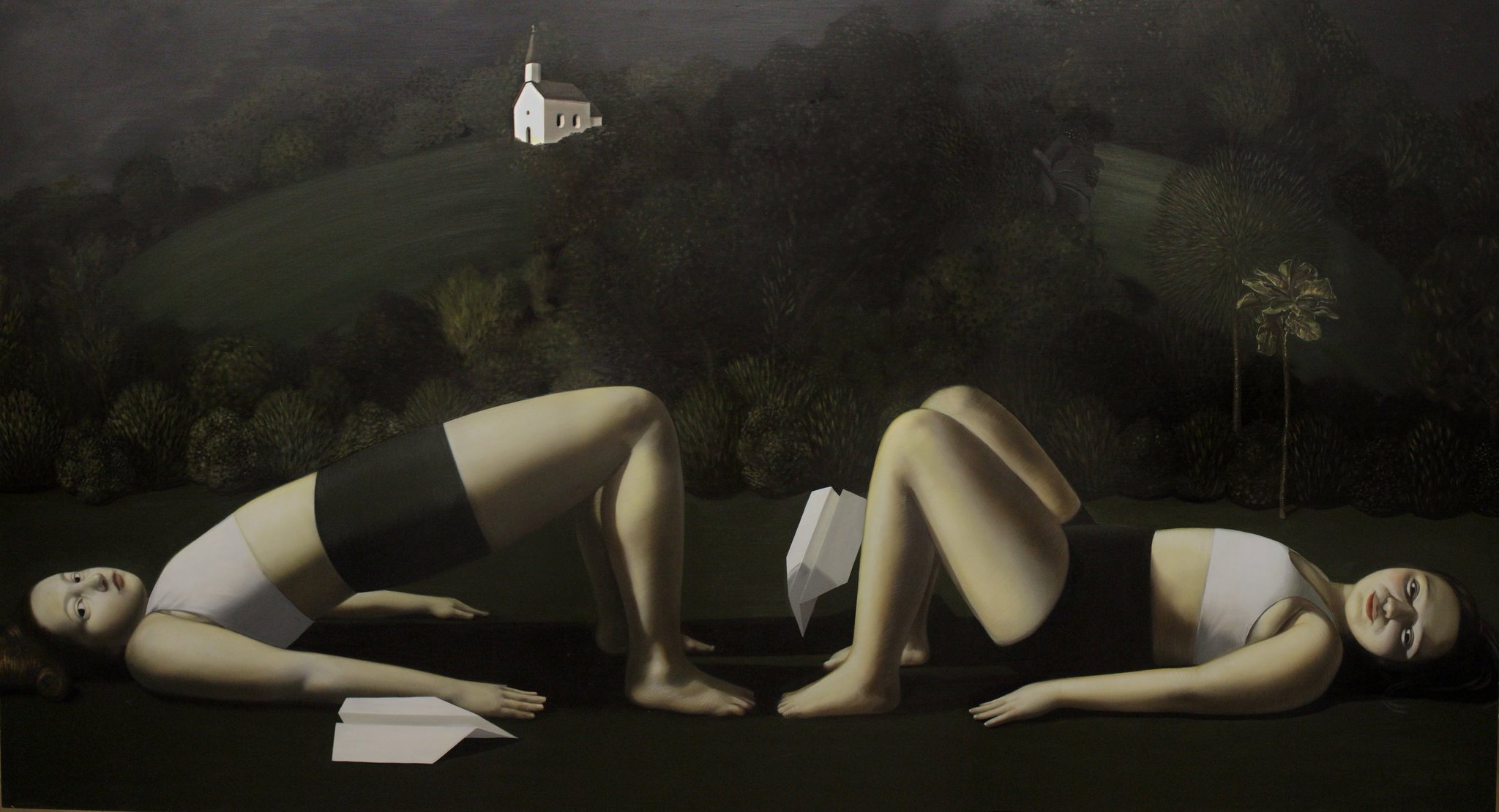
Can you name three emerging women or queer artists we definitely should not miss out?
We would single out Anna Weyant’s devastatingly witty figuration, Ryan Driscoll’s fabulously queer portraits, and Emily Ludwig Shaffer’s precise symbolic spaces.

The Art World
What’s your art-world pet peeve?
Repetitive mediocrity, especially in the service of monetary reward. We are resigned to the commodification of art, but we find it very problematic when art is created with an eye towards exchange value rather than use value.
Some believe that art has the power to bring social changes. What are your views on this?
Rob, a surgeon, would agree. Eric, a political theorist, would add that there’s a lot of philosophical writings devoted to the idea that art has a certain ‘saving power’ within a system that has become too calculating and rational. Art exists as an antithesis to this kind of instrumental reason and has the power to change how people perceive the world. Indeed, it can disclose new potentialities that are otherwise discouraged or concealed by existing norms. One of the great things about art is its ability to do this surreptitiously. It can be coveted and disseminated by people who fail to appreciate its radical nature; then, before you know it, the genie is out of the bottle.
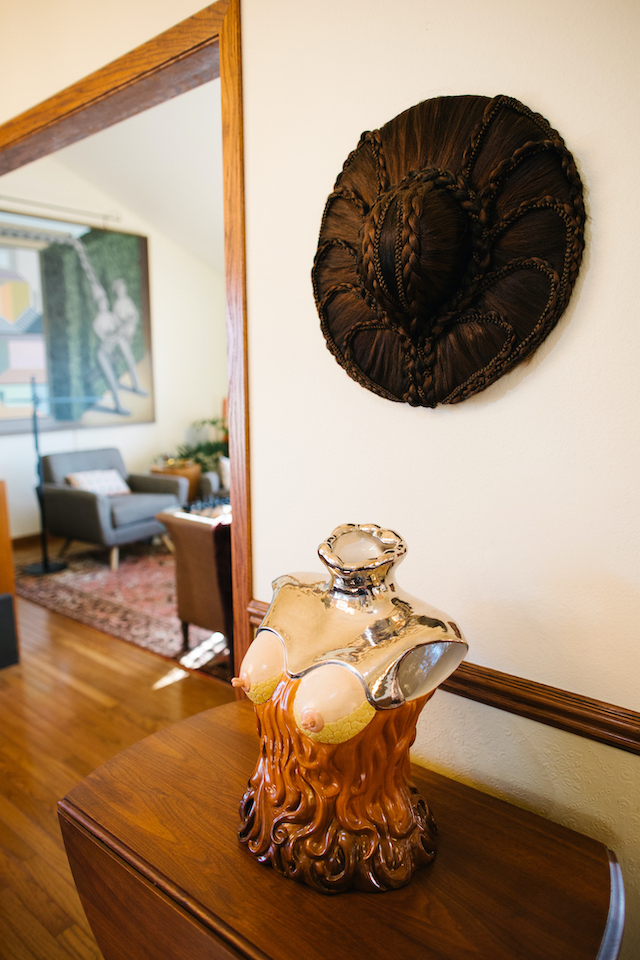
What are you especially excited about in regard to art in 2021?
The vaccine. Real-time and real-life interaction. Art Fairs. Seeing works in person rather than PDF. Most of all, reconnecting with the wonderful artists, gallerists, and other collectors whom we have come to know over the past several years.
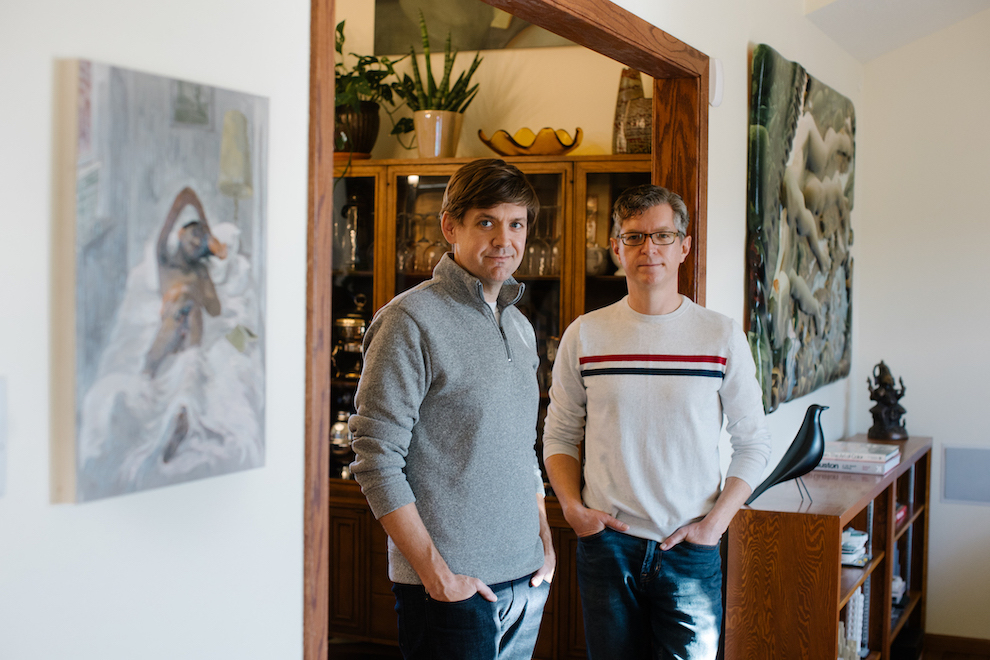
Instagram: @theicygays
A selection of artists Rob and Eric collect:
Anna Weyant
Emily Ludwig Shaffer
Julie Tuyet Curtiss
Molly Greene
Salman Toor
By Ricko Leung





